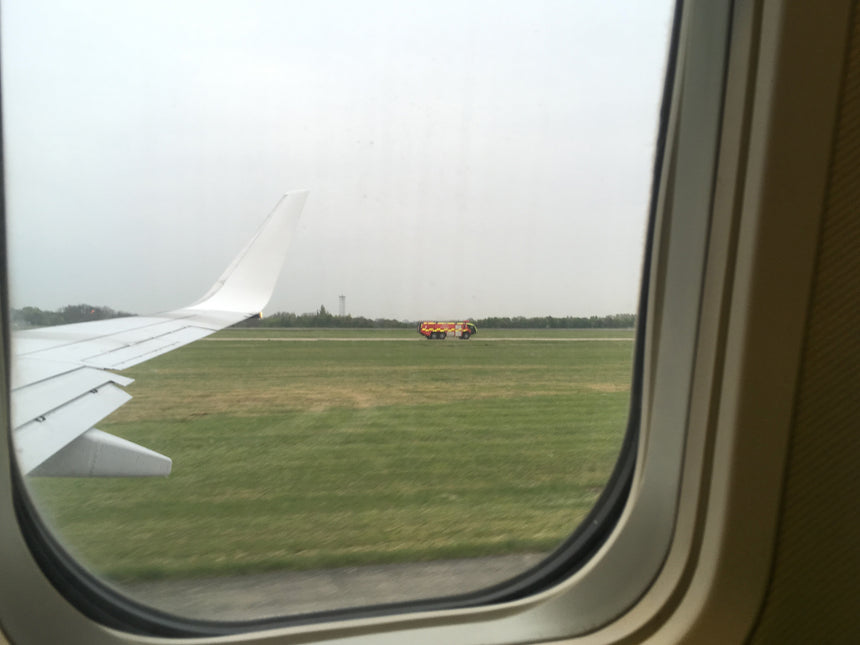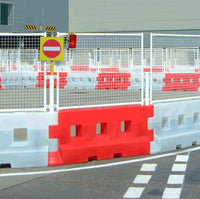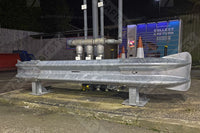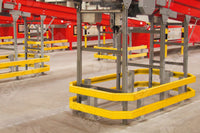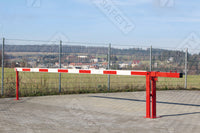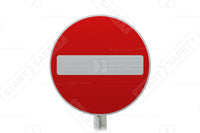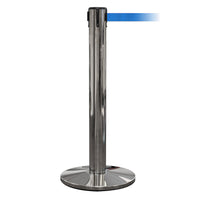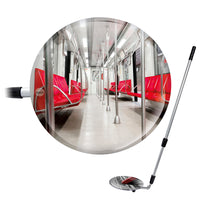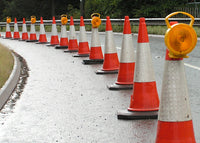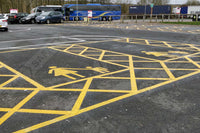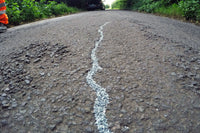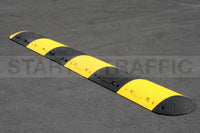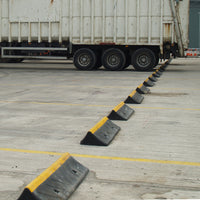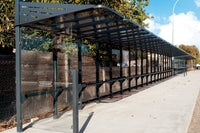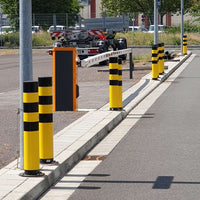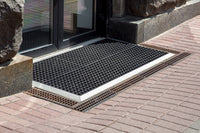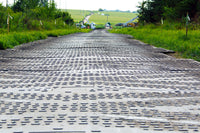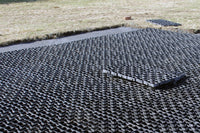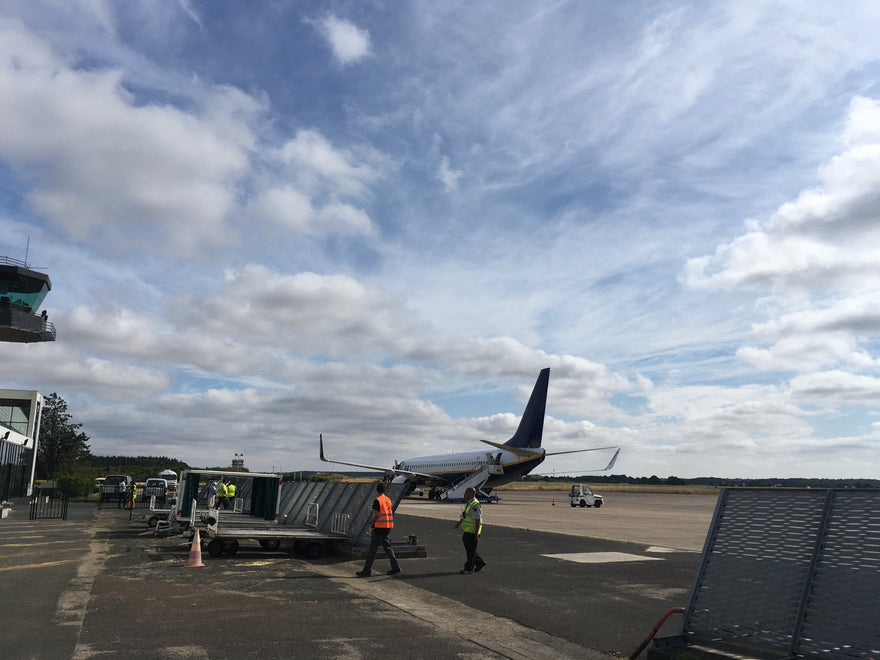Install compliant airside signage
Proper signage is vital in any airport environment - from directional signs for aircraft and vehicles to hazard and restricted access warnings. Clear, durable signage helps prevent airside incursions and ensures smooth ground handling operations.
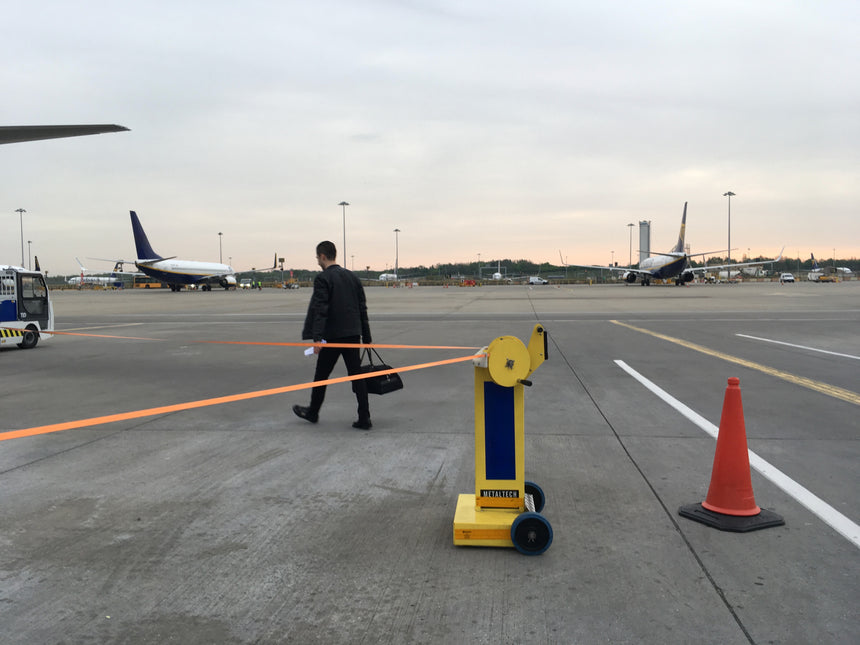
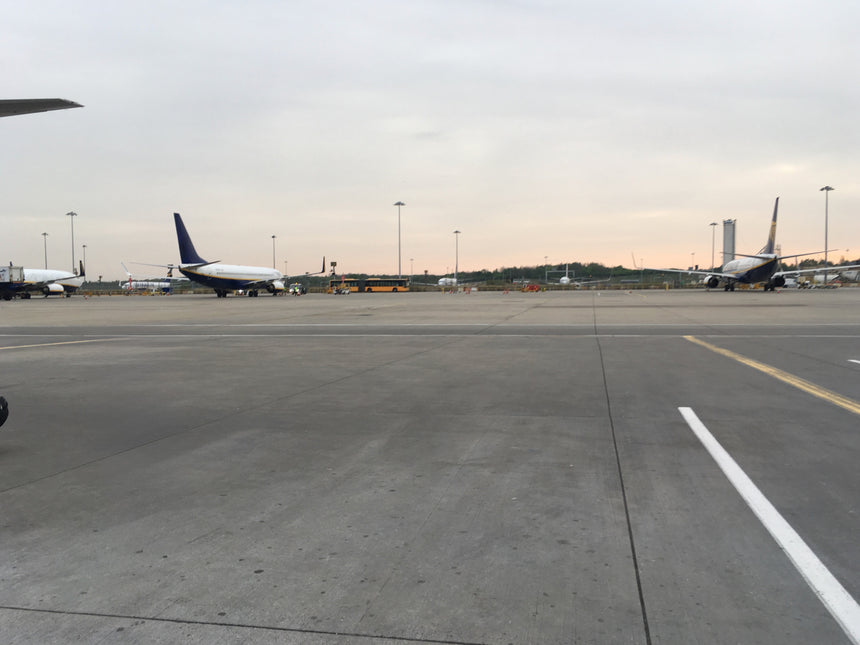
Use high-visibility runway and taxiway markings
Thermoplastic and reflective surface markings are used to define aircraft taxi paths, safe zones, pedestrian crossings, and service vehicle routes. These are critical for maintaining safe distances between aircraft, equipment, and personnel — especially in low-light or wet conditions.
Repair damaged tarmac or surface areas
Cracks, potholes, or loose debris on runways and aprons can pose a serious Foreign Object Debris (FOD) hazard to aircraft. Keeping surfaces smooth, sealed, and regularly maintained helps reduce this risk and makes sure that you are compliant with international safety standards.

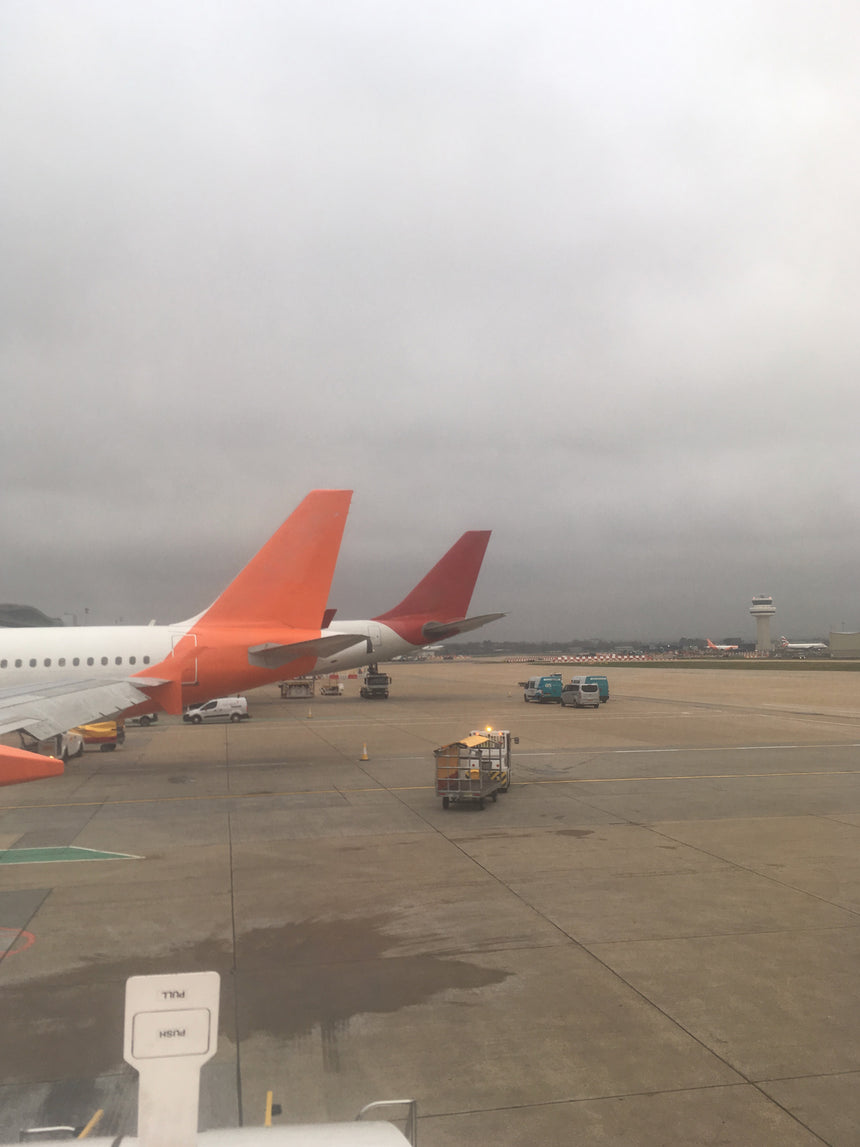
Control service vehicle speeds
Speed bumps, warning signs, and designated service routes help control the speed of vehicles operating on the apron or within landside areas. This helps protect ground crew and prevents collisions with sensitive equipment or infrastructure.
Protect critical zones and pedestrian areas
Install bollards, delineators, or Chapter
8 barriers around fuel stations, lighting arrays, ground support units, and pedestrian walkways to prevent accidental damage from vehicles or tugs.
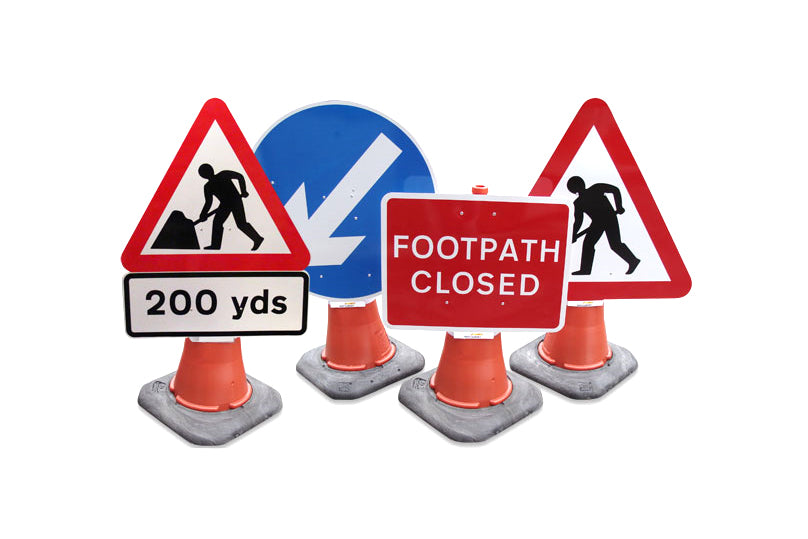
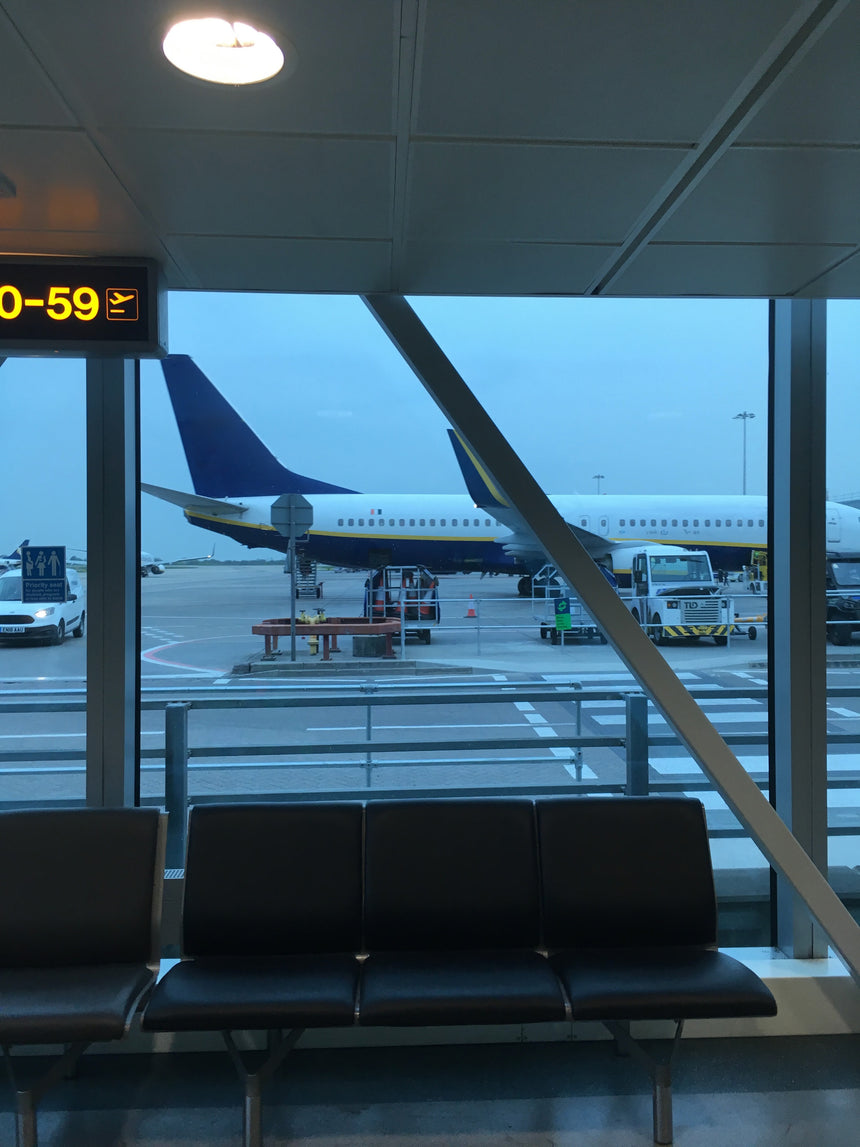
Improve perimeter and terminal security
Restrict access to secure zones with automatic bollards, fencing, and CCTV-monitored entry points. Clear security signage and barriers also help enforce no-entry zones, particularly for non-airside personnel.
Enhance visibility during low light and poor weather
Runway edge lighting, solar-powered delineators, and reflective accessories make it easier for pilots and ground teams to navigate safely in all weather conditions, reducing the likelihood of accidents or
incursions.
